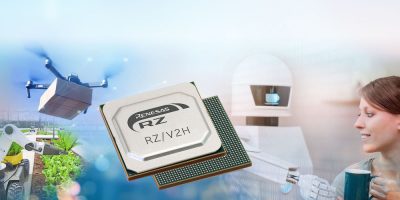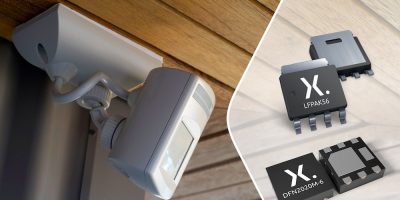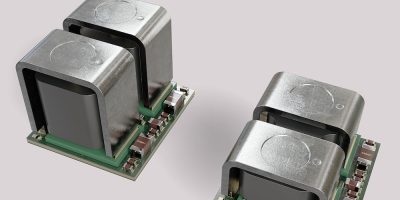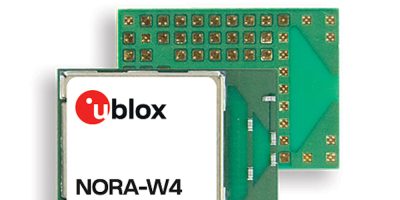Renesas Electronics Corporation, has expanded its popular RZ Family of microprocessors (MPUs) with a new device targeting high-performance robotics applications, the RZ/V2H enables both vision AI and real-time control capabilities.
The device comes with a new generation of Renesas proprietary AI accelerator, DRP (Dynamically Reconfigurable Processor)-AI3, delivering 10 TOPS/W power efficiency, a 10-fold improvement over previous models. Additionally, pruning technology employed in the DRP-AI3 accelerator significantly improves AI computing efficiency, boosting AI inference performance up to 80 TOPS. This performance boost allows engineers to process vision AI applications directly at edge AI devices without relying on cloud computing platforms.
The RZ/V2H incorporates four Arm Cortex-A55 CPU cores with a maximum operating frequency of 1.8 GHz for Linux application processing, two Cortex-R8 cores running at 800 MHz for high-performance real-time processing, and one Cortex-M33 as a sub core. By integrating these cores into a single chip, the device can effectively manage both vision AI and real-time control tasks, making it ideal for demanding robotics applications of the future. Since the RZ/V2H consumes less power, it eliminates the need for cooling fans and other heat-dissipating components. This means engineers can design systems that are smaller in size, less expensive, and more reliable.
Renesas has applied its proprietary DRP technology to develop the OpenCV Accelerator that speeds up the processing of OpenCV, an open-source industry standard library for computer vision processing. The resulting speed improvement is up to 16 times faster compared to CPU processing. The combination of the DRP-AI3 and the OpenCV Accelerator enhances both AI computing and image processing algorithms, enabling the power-efficient, real-time execution of Visual SLAM used in applications such as robot vacuum cleaners.
To accelerate development, Renesas also released AI Applications, a library of pre-trained models for various use cases, and the AI SDK (Software Development Kit) for rapid development of AI applications. By running these software on the RZ/V2H’s evaluation board, engineers can evaluate AI applications easily and earlier in the design process, even if they do not have extensive knowledge of AI.







